How to Rig a Sunfish: Step-by-Step Guide to Sail Away
Imagine the gentle ripple of water, the whisper of a breeze, and the thrill of harnessing the wind to propel yourself across the water. For sailors, there’s no feeling quite like it, and the Sunfish sailboat offers the perfect vessel for such adventures.
In this comprehensive guide, we embark on a journey to help you master the art of rigging a Sunfish sailboat. Whether you’re a novice eager to set sail for the first time or a seasoned sailor in need of a refresher, this article has you covered.
The Sunfish sailboat is renowned for its simplicity, making it an ideal choice for sailors of all skill levels. Our guide will walk you through the essential steps, from setting up the mast and sail to ensuring your boat is shipshape. So, whether you’re preparing for a leisurely day on the water or gearing up for some friendly racing, read on to discover the secrets of rigging a Sunfish and unlocking the full potential of this iconic sailboat.

Introduction to the Sunfish Sailboat
Nestled at the intersection of simplicity and pure sailing joy, the Sunfish sailboat has been captivating the hearts of sailors for generations. With a history dating back to the mid-20th century, this beloved boat is renowned for its straightforward design and the exhilarating experiences it offers on the water.
For anyone looking to venture into the world of sailing, mastering the art of rigging a Sunfish is an essential skill. It’s the very foundation upon which your sailing adventures will be built. Whether you’re a novice seeking your maiden voyage or a seasoned sailor revisiting the basics, understanding how to properly rig a Sunfish is paramount for safety and a delightful time out on the water.
In this guide, we’ll embark on a journey to demystify the rigging process, step by step. By the end, you’ll not only have the knowledge but also the confidence to set sail on your Sunfish, ready to embrace the wind, waves, and the endless possibilities of the open water. So, let’s dive in and uncover the secrets of rigging the Sunfish sailboat for an unforgettable sailing experience.
Gather Your Tools and Equipment
Before you embark on the process of rigging your Sunfish, it’s crucial to ensure you have all the necessary tools and equipment at your disposal. Here’s a comprehensive list of items you’ll need:
- Sunfish Sail: The sail is the heart and soul of your boat. Ensure it’s in good condition, free of tears or significant wear.
- Mast: The mast is the vertical pole that supports the sail. It should be straight and secure.
- Boom: The boom is the horizontal spar that extends the foot of the sail. Check for any signs of damage or rust.
- Lines (Ropes): You’ll need various lines for controlling the sail, including the halyard (raises the sail), mainsheet (controls the angle of the sail), and other lines for rigging adjustments.
- Daggerboard: This board helps with stability and direction. Ensure it’s securely in place and free of damage.
- Rudder and Tiller: The rudder controls your boat’s direction, while the tiller is the handle you use to steer. Make sure they’re both functioning correctly.
- Life Jacket: Safety first! Always wear a properly fitted life jacket when sailing.
- Paddle: In case the wind dies down or you need to maneuver in tight spaces, a paddle can be a lifesaver.
- Bailer or Sponge: To keep the cockpit dry and free of water, especially if it splashes in.
- Tool Kit: A basic toolkit with pliers, a screwdriver, and a wrench can be handy for minor adjustments.
- Sunscreen and Sunglasses: Protect yourself from the sun’s rays.
- Hat and Water: Stay hydrated and shielded from the sun.
- Whistle or Horn: These are essential safety devices for alerting others in case of an emergency.
Before rigging your Sunfish, inspect all equipment for any wear, damage, or missing parts. Safety should always be a top priority, so ensure your life jacket is in excellent condition and fits snugly. Once everything is in order, you’re ready to begin rigging your Sunfish and setting sail for a fantastic day on the water.
Position the Sunfish on Land or in Shallow Water for Rigging
Before you start rigging your Sunfish, you’ll need to prepare the boat properly. Here’s how to do it:
- Choose the Right Location: Select a location on land or in shallow water that’s free from obstacles and provides ample space to work around the boat.
- Position the Sunfish: Carefully position the Sunfish with the bow (front) pointing into the wind. This is important for a smooth rigging process.
- Level the Boat: Ensure the boat is level from side to side. An uneven boat can make rigging and sailing more challenging.
- Secure the Boat: If you’re on land, make sure the boat is securely supported with appropriate boat stands or supports to prevent it from tipping or moving during rigging.
- Check the Wind: Assess the wind conditions. While it’s okay to rig in a light breeze, strong winds can make the process more difficult. If it’s too windy, consider postponing your rigging or seek help from someone experienced in handling a Sunfish in windy conditions.
- Gather Your Gear: Double-check that you have all the necessary tools and equipment nearby, as mentioned earlier.
By positioning the Sunfish correctly, ensuring it’s level, and taking wind conditions into account, you’ll set the stage for a smooth rigging process and a safe and enjoyable sailing experience.
Process of Stepping the Mast, Which Involves Attaching the Mast to the Boat’s Hull
Stepping the mast is a crucial step in rigging your Sunfish. Follow these steps carefully:
- Attach the Mast Step: The mast step is a metal fitting on the boat’s deck near the bow. Insert the bottom end of the mast into the mast step. Ensure it fits snugly and securely.
- Align the Mast: With the mast in the mast step, position it vertically. Check for any lateral (side-to-side) or forward-leaning tilt. The mast should be perfectly upright.
- Attach the Forestay: The forestay is the front rigging line that goes from the top of the mast to the front of the boat. Hook the forestay to the bow eyelet or fitting. Make sure it’s securely attached.
- Secure the Shrouds: The shrouds are the side rigging lines that keep the mast in position. Attach one end of each shroud to the eyelets on the sides of the boat, near the gunwales. The other end of each shroud should be attached to the chainplates on the sides of the mast.
- Adjust Tension: Properly tension the forestay and shrouds. The rigging lines should be tight enough to support the mast but not overly tight, as this can distort the hull. The mast should remain vertical and secure.
- Inspect All Attachments: Double-check that all attachments are secure, and there’s no slack in the rigging lines. Ensure the mast is firmly in the mast step.
Properly stepping the mast and ensuring correct alignment, tension, and secure attachments are essential for safe and efficient sailing. A well-rigged Sunfish will perform better and provide a more enjoyable experience on the water.
Attach the Boom to the Mast and the Sail to the Boom
Attaching the boom and sail correctly is vital for effective sailing. Here’s how to do it:
- Attach the Boom to the Mast: The boom is the horizontal spar that extends perpendicular to the mast. Slide the gooseneck fitting on the front of the boom onto the mast. The gooseneck should fit snugly on the mast, and the boom should rest horizontally.
- Secure the Mainsheet: The mainsheet is the line that controls the angle of the sail. Attach one end of the mainsheet to the eyelet on the back of the boom. The other end will be handled by the sailor while sailing.
- Attach the Sail to the Boom: Slide the sail’s foot (bottom edge) into the boom’s groove, starting from one end and working your way to the other. Make sure the sail is centered on the boom. Secure the sail by tightening the boom vang, a line running from the back of the boom to the mast.
- Tension the Sail: Pull the halyard line (located on the front side of the mast) to raise the sail. The sail should be taut but not overly tight. Adjust the downhaul line (attached to the tack of the sail) to control the tension in the lower part of the sail.
- Adjust the Outhaul: The outhaul line (attached to the clew of the sail) controls the tension in the sail’s foot. Adjust it to achieve the desired sail shape.
- Check Sail Shape: Stand behind the boat and look at the sail’s shape. It should be smooth and evenly tensioned, with no excessive wrinkles or creases. Make adjustments as needed.
- Secure Loose Ends: Secure any loose lines and ensure nothing is dangling or obstructing the sail’s movement.
Properly attaching the boom and sail, as well as adjusting the halyard, downhaul, and outhaul lines, is essential for sail control and efficient sailing. Ensure that all lines are free from tangles or snags, as this will help maintain control over the sail during your voyage.
Daggerboard and Rudder Installation
Inserting the daggerboard:.
- Locate the daggerboard slot on the centerline of the Sunfish hull, typically near the cockpit.
- Hold the daggerboard vertically with the tapered end facing downward.
- Insert the daggerboard into the slot, starting from the top. Ensure it slides smoothly into place.
- Continue pushing the daggerboard down until it rests securely in the slot and is fully submerged in the water. The daggerboard provides stability and prevents lateral movement when sailing.
Attaching the Rudder:
- The rudder consists of the rudder blade and the rudder head. The rudder head fits into a bracket on the back of the boat.
- Insert the rudder head into the bracket and push it down until it clicks or locks into place. There is often a pin or mechanism that secures the rudder in the bracket.
- Ensure the rudder blade is perpendicular to the boat’s centerline and extends downward into the water. The rudder controls your boat’s direction and is crucial for steering.
Checking Control Lines:
Examine the control lines associated with the rudder:
- Tiller: The tiller is the wooden or metal bar connected to the rudder head. Make sure it is securely attached to the rudder head and that it moves freely to steer the boat.
- Tiller Extension: If your Sunfish has a tiller extension, check that it is attached and functioning correctly. The extension allows you to control the rudder while seated.
- Rudder Downhaul Line: The rudder downhaul line controls the angle of the rudder blade. Ensure it is properly adjusted to your desired steering responsiveness.
Properly installing the daggerboard and rudder and ensuring the associated control lines are in good working order are essential steps before setting sail. These components play a critical role in maintaining control and stability while on the water.
Rigging the Various Lines for Sail Control, Including the Mainsheet, Outhaul, and Vang
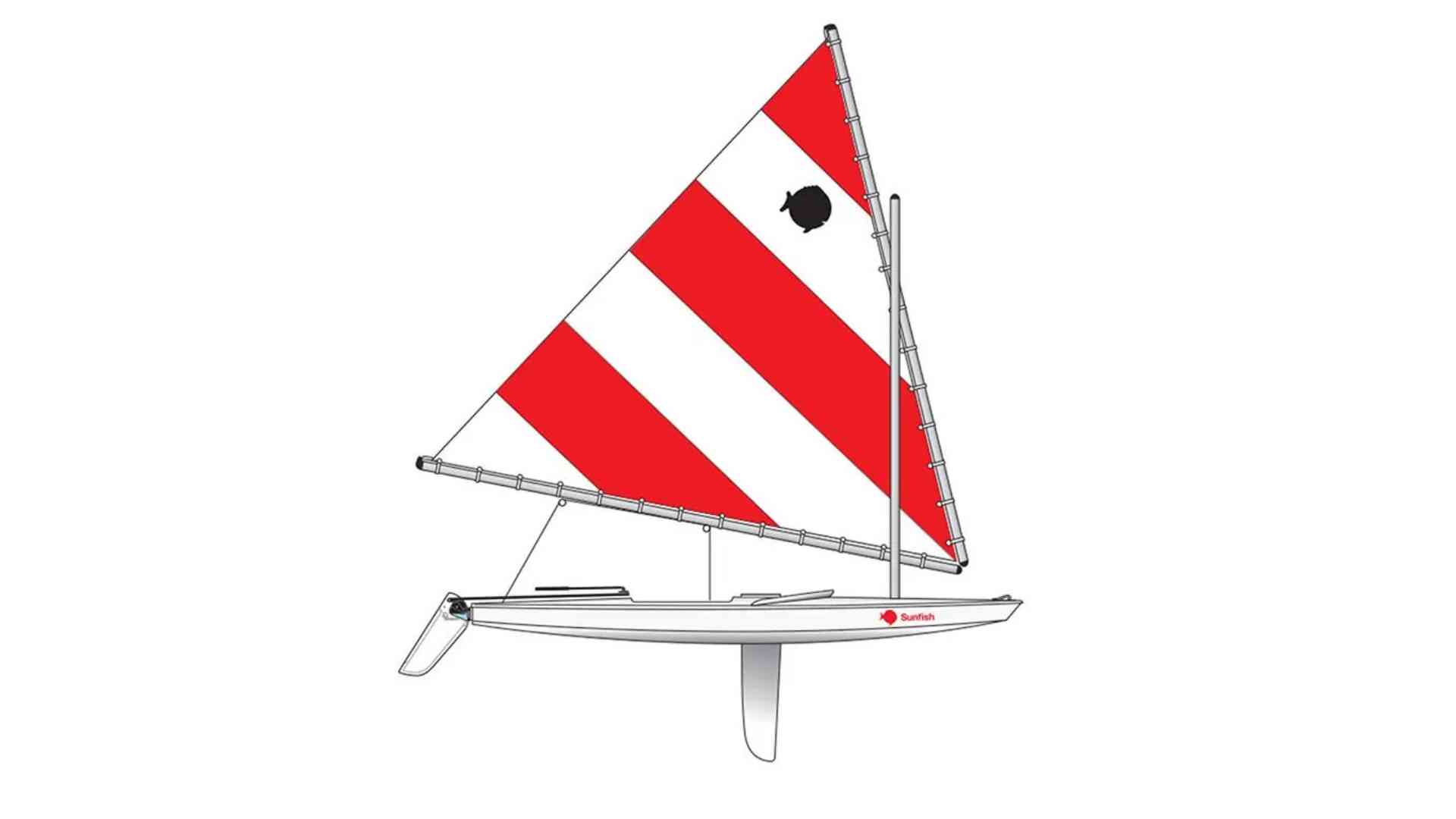
- The mainsheet controls the angle of the sail, affecting your boat’s speed and direction.
- Attach one end of the mainsheet to the aft end of the boom, typically with a bowline knot.
- Thread the other end through the mainsheet block, which is typically attached to the traveler bar on the boat’s cockpit floor.
- Bring the mainsheet line up to the sail’s clew (the lower back corner of the sail) and pass it through the aft grommet (a reinforced hole) in the sail.
- Pull the mainsheet line down, creating tension in the sail. The mainsheet should run freely through the block for easy adjustments while sailing.
- The outhaul adjusts the tension in the foot (bottom) of the sail.
- Attach one end of the outhaul line to the clew of the sail, usually through the outhaul grommet.
- Thread the other end of the outhaul line through the outhaul block or pulley on the boom.
- Adjust the outhaul to your desired sail shape and tension by pulling or releasing the line.
Vang (Optional):
- The vang controls the tension in the leech (back edge) of the sail.
- Attach one end of the vang to the gooseneck fitting on the mast.
- Thread the other end through the vang block on the boom.
- Adjust the vang to control the twist in the sail by pulling or releasing the line.
Cleating Lines:
- Many Sunfish sailboats have cleats to secure lines, allowing for hands-free sailing.
- To cleat a line, simply wrap it around the appropriate cleat and pull it tight. The cleat will hold the line in place.
- To release a cleated line quickly, pull it upward and away from the cleat.
Properly rigging and adjusting these control lines is crucial for sail control and optimizing your boat’s performance. The mainsheet, outhaul, and vang give you control over the sail’s shape, angle, and tension, allowing you to harness the wind effectively while sailing your Sunfish.
Performing Safety Checks Before Setting Sail
Before setting sail on your Sunfish, safety should always be a top priority. Here are some essential safety checks and precautions:
- Buoyancy Check: Ensure that your Sunfish is positively buoyant, meaning it will float even if swamped or capsized. Check for any hull damage or leaks that could affect buoyancy.
- Secure All Lines: Double-check that all lines, including the mainsheet, outhaul, vang, and control lines, are properly secured and free from tangles or knots.
- Equipment Condition: Inspect all equipment, such as the daggerboard, rudder, and sail, to ensure they are in good condition and properly attached., Verify that the mast, boom, and rigging are secure and free from damage or wear.
- Life Jackets: Always wear a Coast Guard-approved life jacket while on the water, and ensure that any passengers also have access to life jackets that fit them properly.
- Safety Guidelines: Familiarize yourself and your passengers with safety guidelines, such as proper body positioning in the boat and what to do in case of capsizing or other emergencies.
- Weather Check: Before heading out, check the weather forecast. Avoid sailing in severe weather conditions, strong winds, or thunderstorms.
- Emergency Gear: Carry essential emergency gear, including a whistle, paddle, bailer, and a means of communication (e.g., a waterproof phone or VHF radio).
- Float Plan: Let someone ashore know your sailing plans, including your intended route and estimated return time. This helps ensure someone is aware of your whereabouts in case of an emergency.
- Boating Knowledge: Ensure you have the necessary knowledge and skills for sailing a Sunfish, especially if you are a beginner. Consider taking a sailing course or sailing with an experienced sailor until you gain confidence.
- Stay Hydrated and Sun-Protected: Bring water to stay hydrated during your sail, especially on hot days., Protect yourself and passengers from the sun with sunscreen, hats, and sunglasses.
By prioritizing safety and performing these pre-sail checks, you can enjoy your Sunfish sailing adventures with peace of mind, knowing that you are well-prepared for a safe and enjoyable experience on the water.
Conclusion and Setting Sail

In conclusion, rigging a Sunfish sailboat is a fundamental skill that allows you to embark on exciting sailing adventures. We’ve covered the step-by-step process, from gathering your tools and equipment to performing safety checks before setting sail.
As you gain experience and confidence in rigging your Sunfish, you’ll discover the joy and freedom of sailing. It’s a skill that opens the door to countless adventures on the water, whether you’re exploring new places, racing with fellow sailors, or simply enjoying a peaceful day on the lake.
Remember that practice makes perfect. The more you rig your Sunfish and set sail, the more proficient you’ll become. Over time, rigging will become second nature, and you’ll be able to focus on the pure pleasure of sailing.
So, take these instructions to heart, get out on the water, and enjoy the wind in your sails as you create unforgettable memories aboard your Sunfish sailboat. Sailing offers a lifetime of enjoyment, and rigging your boat is just the beginning of your exciting journey on the water. Happy sailing!
Share How to Rig a Sunfish: Step-by-Step Guide to Sail Away with your friends and Leave a comment below with your thoughts.
Read New Impeller Not Pumping Water: Troubleshoot and Fixing until we meet in the next article.
Similar Posts

Set Sail for Love: An In-Depth Look at The Love Boat
The Love Boat, a name synonymous with sunshine, romance, and wacky hijinks on the high seas, was more than just a cheesy 80s TV show. It was a pop culture phenomenon that captured the hearts of viewers for a decade and continues to be a nostalgic favorite. So, whether you’re a seasoned sailor or a…

Are Bentley Pontoons Good and Reliable – Reviews
Pontoon boats, with their spacious decks, comfortable seating, and versatile design, have become a favored choice for those seeking leisurely adventures on the water. Among these floating paradises, Bentley pontoons have carved a name for themselves in the boating world. Renowned for their commitment to affordability without compromising on quality, Bentley pontoons have garnered significant…

How to Remove Gas from Your Boat Fuel Tank: Stepwise Guide
Owning a boat comes with the responsibility of proper maintenance and care, and one essential aspect is removing gas from the fuel tank when needed. Whether preparing for long-term storage or addressing issues with old or contaminated fuel, ensuring a clean and well-maintained tank is crucial for optimal boat performance. In this comprehensive guide, we…

Striper Boats for Sale: Built for the Serious Fisherman
Striper boats have carved a niche in the fishing world, renowned for their durability, fishability, and smooth performance. Whether you’re a seasoned angler or just starting your saltwater adventures, a Striper boat might be the perfect catch for your needs. A Legacy of Quality Striper boats are built by Seaswirl, a reputable company with a…

Blount Boats: Taskmasters of the Sea for Over 7 Decades
For those seeking a dependable, high-quality commercial vessel built to endure the toughest maritime conditions, Blount Boats stands out as a premier name. Since 1949, this Rhode Island-based shipyard has carved a reputation for crafting exceptional steel and aluminum vessels that have served a diverse range of purposes across the globe. A Legacy of Innovation…

5 Most Common Problems with Caravelle Razor Boat
Caravelle Razor boats, with their sporty lines and potent performance, lure in both adrenaline junkies and casual boaters seeking thrills on the water. But even the sleekest stallions can falter. So, before blasting off with your Razor, let’s dive deep into the most common problems these boats encounter and explore potential solutions: 1. Hull Hiccups:…
JavaScript seems to be disabled in your browser. For the best experience on our site, be sure to turn on Javascript in your browser.
- Compare ( )
- Create an Account
- Essentials and Rigging Guides
Navigation:
Sunfish Essentials:

Rigging Guides:

How To Rig A Sunfish Sailboat? (Step By Step Guide)

Sunfish sailboats are a lot of fun and easy to use. They are a great boat to have at your dock for the kids or adults to play around on. The only daunting part is rigging the sunfish, which is actually not that hard. This article will guide you through the process of rigging your sunfish.
Before you start taking steps to rig your sunfish there are a few things to keep in mind. See below.
The three knots your need to know for rigging a sunfish are listed below:
- Cleat Hitch
Another important tip to remember is, that rigging sunfish or laser-type boats can be done if different ways. This is a basic setup and can be used on most sunfish boats. Let’s start rigging!

1. Attach the rudder to your sunfish sailboat.
The rudder is the first item you will connect to your sunfish. Make sure to slide the tiller of the rudder under the traveler line.
2. Point your sunfish boat into the wind.
Pointing your sunfish sailboat into the wind will make it easier when raising your sail. It is the same even if you are on a large boat out in the ocean. Raising the mainsail is always easier when the wind isn’t hitting it.
3. Lay the spars and sail on the port side.
This step is where you will bring out the sail, boom, and mast for setup. Make sure the halyard is free of entanglement.
4. Run the halyard through the mast cap.
Make sure the line is run through the mast cap to the side of the mast with the cleat. This way you will be able to raise the sail and cleat it off.
5. Raise the mast and insert it into the mast step.
Run the mast through the gooseneck before inserting it into the mast step in the deck.
6. Pull the halyard to raise the sail and upper boom.
This step will raise the sail and booms. If the sail is not going all the way up, you may need to lift on the gooseneck while pulling the halyard. This will be difficult if you skipped step 2. Once the sail is all the way up, cleat it off with a cleat hitch knot. If the cleat is on the opposite side of the mast go back to step 4.
7. Rig the mainsheet by running it through the block.
The block will only turn in one direction so make sure to feed it through correctly. If it turns both ways it will still work, but it will be harder on your arms. Tie a stopper knot at the end of the sheet. Figure 8 knot should work great. The other end of the sheet gets tied to the traveler with a bowline knot.
8. Attach the daggerboard to the mast.
Daggerboards go down through the middle of the boat and act as the keel for the sunfish. You always want a safety bungee attached to the daggerboard and the mast in case you flip over. You do not want it sinking to the bottom of the ocean.
9. Put the boat into the water.
Once you get your boat into the water, double-check all lines are positioned correctly. Also, put the daggerboard into the water, as long as it isn’t too shallow. If it is too shallow, wait until you get into deeper water.
Video Guide For Rigging A Sunfish Sailboat
The video below shows a more in-depth walkthrough of rigging a sunfish sailboat. Even if you don’t have this exact type of boat it can be applied to yours in some ways.
If you would like to learn more about Sunfish sailboats keep reading!
History Of Sunfish Sailboats
Sunfish was developed by Alcort, INC and first appeared around 1952 as the “next generation” improvement on their original boat, the sailfish. In contrast, the Sunfish has a wider beam for more stability, an increased freeboard, and the addition of a foot-well for a more comfortable sailing position. Sunfish began as a wood hull design and progressed to fiberglass construction just a few years after its introduction.
The Alcort Company was created by Alex Bryan and Cortlandt Heyniger in 1945. They began this company by building iceboats. While building iceboats, they were approached by the Red Cross to build a prototype for a lifesaving paddleboard. They decided to improve the idea and came up with more of a sailing canoe style instead of a paddleboard. After designing this canoe they thought they had a new money-making idea, and they did. This is when the Sailfish was born.
Bryan’s wife suggested a boat where she would be able to put her feet into a small cockpit. This changed the design from Sailfish to Sunfish.
They continued making boats for years. Originally these boats were all wood, which I personally love, and wish I had one, but in 1960 the first fiberglass model came out and wood boats were eventually phased out. Take a look at the timeline below for more key dates in the Sunfish life.
- 1969 – American Machine and Foundry (AMF) took over production.
- 1971 – A storage compartment was added to the rear of the cockpit.
- 1995 – The Sunfish is inducted into the American Sailboat Hall of Fame.
- 1997 – Vanguard takes over making Sunfish sailboats.
- 2007 – Laser is now the maker of Sunfish sailboats.
Now you might be asking yourself how much are these and where can I get one? Keep reading to find out!
How Much Does A Sunfish Sailboat Cost? – Where To Buy
A new sunfish sailboat will cost you between $4000 and $6000 dollars. You can go to Sunfish Direct and design your own boat. I did a test of this and mine would have cost me $4885 dollars, if I picked it up from their facility.
Sunfish Direct is a great place to go if you have the money for a new boat and want to design it yourself. I did a basic setup in my design and found the price to be very fair. You don’t have to go with a new one though.
You can go to Smart Marine Guide and find them for much cheaper. You won’t get the exact style or color you want probably, but it is still a great option to go used. I have seen them for $500 on this site, but you have to live near where it is of course. There are a lot of options though.
If you just need parts I recommend going to the link below. It is Sunfish Directs amazon page and they have everything you need.
In Conclusion
This article was all about Sunfish Sailboats and how to rig them. Remember this is a basic rigging setup and can be altered in many ways. The important thing to remember is to do what is best for your situation. If you are thinking of buying a sunfish, use the links in the “How Much Does A Sunfish Sailboat Cost” section. If all you are looking for is parts, click the sunfish direct button above. They will have everything you need. I hope this article helps you with your sunfish sailboat. Let me know by contacting BoatlifeHQ.
Boatlifehq owner and author/editor of this article.
Recent Posts
How to Repair a Sailboat Hull: Step-by-Step Guide
Maintaining your sailboat's hull is crucial for ensuring its longevity and performance on the water. Hull damage can occur due to various reasons, such as collisions, grounding, or general wear and...
10 Steps For Anchoring Your Sailboat
Anchoring a sailboat is a fundamental skill every sailor must master. Proper anchoring ensures your boat remains secure, preventing it from drifting and potentially causing damage. Whether you're...
How to Rig a Sunfish Sailboat

Table of Contents
“As an Amazon Associate I earn from qualifying purchases at no additional cost to you”
The Sunfish is arguably the most popular sailboat on the planet. Its popularity is characterized by its inexpensive price, easy portability (probably the only car-toppable sailboat), and easy to rig and sail with just one control line.
But our focus today is on one critical part – how to rig a sunfish. If you just bought your first Sunfish sailboat, sit back and read through this complete step-by-step guide of rigging this kind of dinghy . I hope you already know the parts of a dinghy but if not, well, that’s a topic for another day.
And off we go:
1: Point the sailboat’s bow into the wind. Why? To keep the sail over the Sunfish when it is raised. This will avoid hitting other people or boats with the booms and make it easier to affix the mainsheet.
2: Lay the spars and sail on the sailboat with the mast ring toward the bow.
3: Untie the sail/spar bundle knot and pull the line to undo the bundle. The spars and sail are usually bundled using the mainsheet and halyard.
4: Attach the Boom Sling. Find a spot around fifteen inches below where your halyard meets the upper boom. Pull one side of the Boom Sling around the upper boom and the halyard. Pull the line through the loop to capture the halyard and upper boom. Now, pull the other end of the line to where the lower boom and upper boom meet, and slide the loop over the end of the boom and into the notch formed by the bolt joining the booms.
5: Properly align the mast and boom. Make sure the boom is on the port side of the mast.
6: Ensure the halyard is running directly from the upper boom to the top of the mast and through the hole at the top of the mast.
7: Be sure that the sail is lying towards the port side of the sailboat, and that the mainsheet isn’t wrapped around anything, but just lying below the lower boom.
8: Align the mast, lower and upper booms so that the mast ring is directly over the mast step.
9: Raise the mast and gently place it in the mast step in the deck. Don’t forget to keep hold of the halyard and make sure it’s running neatly through the masthead fairlead from the back to the front.
10: Guide the end of the halyard via the fairlead to starboard of the mast.
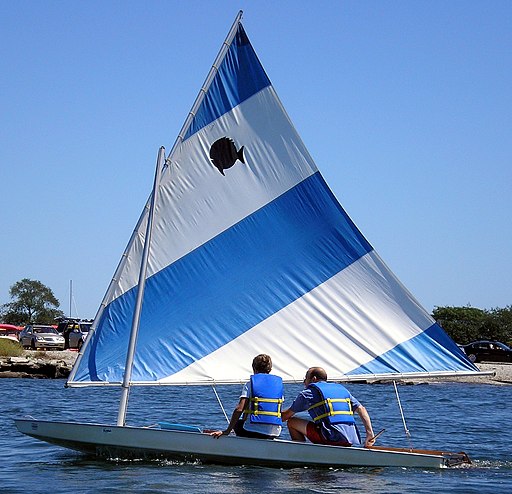
11: Pull the halyard to raise the spar and the sail. Reach down and lift the gooseneck ring so the sail can go all the way to the top of the mast.
12: Tie a cleat hitch in the halyard around 2ft above the cleat and then feed the halyard tail through the cleat hitch and bring it down to fit over the cleat. This helps secure the sail.
13: Ensure the mainsheet runs through all the available sleeves on the boom to stop it from hanging down and catching your neck during tacks and gybes. Tie a cleat knot preferably a figure 8 around the cleat and secure the final turn with an extra twist.
14: Lead the excess halyard tail through the deck fairlead, over the gooseneck and back via the fairlead. Pushing the lower spar down a bit while holding onto the halyard tightly will restrict the spar from rising in harsh winds.
15: Tie another cleat knot on the deck. This one is crucial just in case you capsize as it will keep the sail from falling off the sailboat and sinking. You can tie the extra halyard to the junction of the upper and lower spars with a bowline.
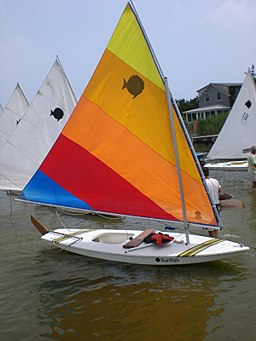
16: Now, run the mainsheet through the ratchet block at the front of the cockpit. Keep in mind that the block only runs in one direction, so be sure to check that first. Tie a stopper knot or figure 8 at the end of the sheet so that it doesn’t get away while you sailing.
17: Tie the other end of the mainsheet to the bridle with a bowline.
18: Fasten the bungee cord affixed to the daggerboard around the mast and then clip it to itself. This is to ensure that the daggerboard stays in the sailboat, as well as supply tension to hold the daggerboard in a partially raised position.
19: Attach the rudder and put the centerboard in its place.
20: Jump in, launch, and go sailing!
And that’s it as far as rigging a Sunfish sailboat is concerned. A piece of advice here is that you need to know at least three types of knots to successfully rig a sailboat: a cleat hitch, a stopper knot or figure 8, and a bowline .
Before you go, let me answer a few frequently asked questions about Sunfish sailboats.
How much is a sunfish sailboat?
A new Sunfish sailboat will set you back at least $4,500 while a used one in good condition will usually fall in the range of $900 to $1,200.
In the case of used boats, there are few things to be keen on. Firstly, a decent used boat should have a smooth hull, uniformly firm with no soft areas, and without deep imperfections or holes.

from PxHere
Secondly, the sailboat ought to be dry sailed, meaning it must have been stored on land, off the ground, and under proper shelter throughout the time when it was not being used. The reasoning behind this is that boats left in water or carelessly stored gain weight quickly, and weight is something you want to keep at a minimum when sailing. I won’t recommend a used Sunfish for competitive sailing unless it’s within a few kilograms of the weight of a new one.
How fast can a sunfish sailboat go?
Now, let’s first be clear that ‘fast’ is always relative because different factors come into play to determine how fast you can go. For instance, a general rule of thumb has it that a lighter boat sails faster than a heavy one. Also, a longer sailboat will record a higher maximum speed than a shorter boat.
What’s more? Boats tend to sail slower in cold waters than in warm waters, and shallow waters decrease boat speed too as the vessel sinks more and has to displace more water out of its way.
Another thing to remember is that Sunfish sailboats are casual-style boats, and so you might want another option if you’re after the need for speed. All in all, a sunfish sailboat can clock 11 knots in favorable conditions. Keep in mind that the official Laser sailboat speed record is 16.8 knots, and Lasers tend to be faster than Sunfish.
How heavy is a sunfish sailboat?
A new Sunfish is typically 120 pounds (54kg).
How to transport a Sunfish sailboat?
Nearly all Sunfish sailboats are cartoppable, thanks to their small and lightweight designs. Simply install the right equipment on the top of your car, such as roof rack and straps, and you’ll find it a doddle transporting your Sunfish. Alternatively, you can buy a trailer and it will save you the work of loading and taking down your sailboat.
How to clean a sunfish sailboat?
Now there’s no formula on how to clean a Sunfish sailboat or any sailboat for that matter. But let me give a few tips on how I do it. I realized that beginning from the topmast to the sails and down to the keel is pretty efficient. Be sure to use non-harmful detergents too.
To clean the sail, first set it down on a clean, flat area. Add some liquid detergent into a bucket of warm water and brush the sail gently to remove debris. You can also clean the sail with your hands, though this process is time-consuming.
As for the hull, I tend to use a pressure washer with a gentle nozzle to remove the worst of the dirt. I then mix a bucket of water and laundry detergent and wash the entire hull using a scrubber or kitchen sponge. Next up is rinsing the whole thing using a clean sponge and plenty of clean water after which I let it dry. Note that your hull (especially fiberglass) might require extra maintenance depending on how dirty and greased it is. Perhaps an extra polish or wax to keep looking nice.
The mast and boom can always do with some scrubbing with soapy water and giving them a good rinse. Bleach can be used to remove tough stains such as mildew.
To cut a long story short, most cleaning involves the use of soapy water, a mild detergent, and a sponge. Just make sure to follow instructions as per the cleaner of your choice.
The Sunfish sailboat is loved by all and the small matter of how to rig a Sunfish is now done and dusted. When the wind is good, just take to the water and have fun zipping about. If you have any additional questions or feedback, feel free to leave a comment below.

PS: Interested in the best drysuits for dinghy sailing ? Check out our guide here!
Happy sailing!

Bill is an ISA Sailing & Powerboating Instructor in Ireland. He writes about all things sailing.
Related Articles that might be of interest to you:

The 5 Best Shoes for Dinghy Sailing – Expert’s Guide
“As an Amazon Associate I earn from qualifying purchases at no additional cost to you” Answering the call of adventure by dinghy sailing requires you have all the right equipment at hand. You cannot go dinghy sailing with a pair of office shoes; you need proper water shoes that work

How to Unclog an Outboard Motor
“As an Amazon Associate I earn from qualifying purchases at no additional cost to you” A clogged outboard motor can be the most frustrating thing you’ll ever experience with your boat. The extent of your frustration depends on the area, nature and the actual cause of the problem. For instance,

The 6 Best Marine Spotlights in 2022- Reviews & Buying Guide
“As an Amazon Associate I earn from qualifying purchases at no additional cost to you” Sailing or fishing at night can be very challenging if you don’t have a reliable source of light. This means that you need to invest in the best marine spotlight since these devices provide excellent illumination.
Leave a Comment Cancel Reply
Your email address will not be published. Required fields are marked *
- Techniques & Guides
- Yacht Equipment
- Personal Gear
Made by Dancing Data.
Disclosure . Terms and Conditions . Privacy Policy

Sunfish Sailing Boat: Techniques, Maintenance, Racing, Community
Published by oceanwave on august 5, 2023.
The Sunfish sailing boat , is a compact, lightweight, and adaptable vessel created for sailing for leisure. Its simplicity and usability make it a popular option for both novice and seasoned sailors.
Alex Bryan and Cortlandt Heyniger, who created Alcort, Inc., originally unveiled the Sunfish sailboat in the early 1950s. The popular “Lateen” sail employed by the Moors and other ancient cultures served as inspiration for its design. The Sunfish has had tremendous growth in popularity over time and continues to be a recognised icon of recreational sailing.
Design and Structure
The Sunfish has a straightforward, fibreglass hull with a flat bottom that offers stability and manoeuvrability. Its single-person design makes sailing alone on it comfortable. Tandem sailing is a popular use for several Sunfish variations that have been altered to suit two individuals.
The daggerboard, a retractable centerboard, on the Sunfish enhances overall stability by assisting in preventing lateral movement while sailing upwind. Effective boat steering is made possible by the rudder, which is at the stern.
The comparatively tall and slender Sunfish mast makes for an effective and exciting sailing experience.
The sail is a lateen rig with a characteristic triangle shape, composed of sturdy materials like Dacron. Using a halyard and a sheet line, the sail may be readily raised or dropped.
Simple rigging is used on sunfish sailing vessels. The mainsheet regulates the sail’s pitch, and the tiller steers the boat by moving the rudder. The outhaul and cunningham modify the shape and tension of the sail while the halyard lifts and lowers it to improve performance.
Sunfish Sailing Techniques
Rigging the sunfish.
A Sunfish must have its sail, daggerboard, and rudder tightly fastened before it may sail. For safe and pleasurable sailing, proper rigging is crucial.
Basic Sailing Maneuvers
- Tacking: This maneuver involves rotating the boat’s bow through the wind, which allows the sail to seamlessly change sides.
- Jibing: Jibing refers to rotating the stern of the boat through the wind and switching the sail to the opposing side.
- Points of Sail: For effective sailing and navigating a variety of wind conditions, it is essential to comprehend the various points of sail (upwind, close-hauled, reaching, and downwind).
Advanced Sailing Techniques
- Racing Strategies: For competitive sailors, learning racing strategies, such as starting procedures, mark edging, and tactical decision-making, can greatly enhance performance.
- Windward Sailing: To sail upwind (windward) and make headway against the wind, accurate sail trimming and boat positioning are necessary.
- Downwind Sailing: To sail effectively downwind, you must maximize your sail angle and take advantage of wind shifts to increase your speed and momentum.
Popular Sunfish Sailing Destinations
Coastal regions, lakes, and reservoirs all around the world are frequently enjoyed by sunfish sailors. The Great Lakes, American coastal regions, and picturesque areas in Europe and beyond are among the most well-liked travel destinations.
With winds typically ranging from 5 to 15 knots, the Sunfish is perfectly suited for light to moderate conditions. For beginners, calm waters and protected harbors are ideal, but for experienced sailors, more difficult open-water conditions may be desired.
Sailing any boat, especially the Sunfish, requires utmost caution. In addition to being mindful of the weather, sailors should always wear the proper personal flotation devices (PFDs). It’s important to observe all boating laws and keep within approved sailing areas.

Maintenance and Care
Storage and cleaning.
A Sunfish sailing boat must be properly maintained in order to last for a long time and operate at its best. Use fresh water to thoroughly rinse the boat after each sailing session to get rid of any salt or debris. To clean the hull and deck, use mild soap and a gentle brush instead of abrasive cleaners that could harm the fibreglass. Dry the boat completely after cleaning it before storing it.
For storage, choose a covered space or spend money on a boat cover to shield the Sunfish from the elements. The boat’s health and longevity will be preserved and increased by keeping it out of the rain, sunlight, and extremely hot or cold weather.
Fixing Small Damages
Check the Sunfish frequently for any indications of wear or small damage. To stop future damage, cracks, chips, or scratches on the hull should be fixed right away. Using repair kits that are available from boat dealers or specialty stores, boat owners can frequently handle minor repairs.
Consider contacting a specialised yacht repair agency for assistance with larger damages or structural problems. In addition to keeping the Sunfish in excellent condition, proper maintenance will guarantee the sailor’s safety.
Seasonal Maintenance Checklist
Make sure to give the Sunfish a complete inspection before each sailing season. Look for any wear or fraying in the rigging, including the mast, sail, and lines. To ensure smooth functioning, lubricate moving components like the rudder and daggerboard systems.
Check the hull for any potential leaks and confirm that all hardware and fittings are firmly attached. Replace damaged lines or hardware as necessary. Check the sail’s integrity as well, keeping an eye out for any tears or wear that could impair performance.
Racing and Competitions
A thrilling feature of Sunfish sailing is Sunfish class racing, when sailors compete in regulated competitions and regattas. The International Sunfish Class Association (ISCA) has established particular guidelines and requirements for the Sunfish class. Typically, races have short tracks, and competitors try to complete as quickly as they can.
The chance to compete in many local, national, and worldwide regattas is available to Sunfish sailors. The Sunfish World Championship, North American Championship, and various regional championships held in various nations are a few of the important competitions.
Specialised training and practise are essential for everyone interested in racing. Experienced racers and coaches frequently organise training camps and clinics to aid participants in honing their abilities and strategies. Mastering race-specific manoeuvres, comprehending wind patterns, and refining racing strategy are all part of competitive preparation.
Sunfish Sailing Community
The Sunfish sailing community is a thriving and encouraging global network of sailors. The governing body, in charge of enforcing class regulations and planning significant events, is the International Sunfish Class Association (ISCA). Local Sunfish class organizations offer further assistance and possibilities for sailors to interact in various places.
Sunfish sailing boat aficionados have venues to share experiences, ask questions, and swap advice through online forums and social media groups. Additionally, there are several of websites and blogs that provide helpful resources including regatta dates, maintenance advice, and sailing skills.
The advantages of joining the Sunfish sailing community are numerous. It offers a wonderful chance to connect with like-minded people, pick the brains of seasoned sailors, and share the thrill of sailing. Participating in community activities also promotes a sense of camaraderie and provides both novices and seasoned sailors with invaluable support.
Sunfish sailing boats are an enticing option for sailors of all ages and experience levels because they provide the ideal balance of simplicity, excitement, and versatility. Sunfish sailing continues to be popular because to its simplicity in maintenance, ease of rigging, and accessibility to a variety of sailing locations.
The Sunfish offers a simple and pleasurable entry point for people who are thinking about taking up sailing. Its user-friendly layout and the Sunfish community’s assistance guarantee a pleasurable and unforgettable trip on the water. Therefore, giving Sunfish sailing a try can spark a passion for the sport that lasts a lifetime, whether the goal is a peaceful day on the lake or serious racing.
To discover more about various liveaboard sailboats , yachts, and catamaran, check out this Sailboat Data page. You may discover comprehensive details on different sailboat models and their performance here, making it easy for you to pick the best boat for your requirements with Ocean Wave Sail !
Related posts.

How to Buy the Best Beginner Sailboat?
Sailing is an alluring activity because it offers the possibility of independence on the broad sea and the rush that comes from using the wind. You’re in for a gratifying experience if you’ve made the Read more…

OceanWaveSail updates
How to anchor a boat.
One of the key abilities you must acquire before setting sail on your boat, whether it’s for a weekend getaway or a long-distance trip, is how to anchor a boat. While you’re out on the Read more…

How Fast Does a Cruise Ship Go?
Have you ever pondered “How fast does a cruise ship go?” while standing on a cruise ship’s deck and looking out at the great ocean? Many people have this thought on their minds when they Read more…
Subscribe to our newsletter
Don’t miss new updates on your email.
© OceanWave Sail. All Rights Reserved 2022
Terms & Conditions – Privacy Policy – Cookie Policy
About Us – Privacy Policy
- New account
Forgot your password?
Lost your password? Please enter your email address. You will receive mail with link to set new password.
Back to login
Privacy Overview
| Cookie | Duration | Description |
|---|---|---|
| _GRECAPTCHA | 5 months 27 days | This cookie is set by the Google recaptcha service to identify bots to protect the website against malicious spam attacks. |
| apbct_cookies_test | session | CleanTalk sets this cookie to prevent spam on comments and forms and act as a complete anti-spam solution and firewall for the site. |
| apbct_page_hits | session | CleanTalk sets this cookie to prevent spam on comments and forms and act as a complete anti-spam solution and firewall for the site. |
| apbct_prev_referer | session | Functional cookie placed by CleanTalk Spam Protect to store referring IDs and prevent unauthorized spam from being sent from the website. |
| apbct_site_landing_ts | session | CleanTalk sets this cookie to prevent spam on comments and forms and act as a complete anti-spam solution and firewall for the site. |
| apbct_site_referer | 3 days | This cookie is placed by CleanTalk Spam Protect to prevent spam and to store the referrer page address which led the user to the website. |
| apbct_timestamp | session | CleanTalk sets this cookie to prevent spam on comments and forms and act as a complete anti-spam solution and firewall for the site. |
| apbct_urls | 3 days | This cookie is placed by CleanTalk Spam Protect to prevent spam and to store the addresses (urls) visited on the website. |
| cookielawinfo-checkbox-advertisement | 1 year | Set by the GDPR Cookie Consent plugin, this cookie is used to record the user consent for the cookies in the "Advertisement" category . |
| cookielawinfo-checkbox-analytics | 11 months | This cookie is set by GDPR Cookie Consent plugin. The cookie is used to store the user consent for the cookies in the category "Analytics". |
| cookielawinfo-checkbox-functional | 11 months | The cookie is set by GDPR cookie consent to record the user consent for the cookies in the category "Functional". |
| cookielawinfo-checkbox-necessary | 11 months | This cookie is set by GDPR Cookie Consent plugin. The cookies is used to store the user consent for the cookies in the category "Necessary". |
| cookielawinfo-checkbox-others | 11 months | This cookie is set by GDPR Cookie Consent plugin. The cookie is used to store the user consent for the cookies in the category "Other. |
| cookielawinfo-checkbox-performance | 11 months | This cookie is set by GDPR Cookie Consent plugin. The cookie is used to store the user consent for the cookies in the category "Performance". |
| CookieLawInfoConsent | 1 year | Records the default button state of the corresponding category & the status of CCPA. It works only in coordination with the primary cookie. |
| ct_checkjs | session | CleanTalk–Used to prevent spam on our comments and forms and acts as a complete anti-spam solution and firewall for this site. |
| ct_fkp_timestamp | session | CleanTalk sets this cookie to prevent spam on the site's comments/forms, and to act as a complete anti-spam solution and firewall for the site. |
| ct_pointer_data | session | CleanTalk sets this cookie to prevent spam on the site's comments/forms, and to act as a complete anti-spam solution and firewall for the site. |
| ct_ps_timestamp | session | CleanTalk sets this cookie to prevent spam on the site's comments/forms, and to act as a complete anti-spam solution and firewall for the site. |
| ct_sfw_pass_key | 1 month | CleanTalk sets this cookie to prevent spam on comments and forms and act as a complete anti-spam solution and firewall for the site. |
| ct_timezone | session | CleanTalk–Used to prevent spam on our comments and forms and acts as a complete anti-spam solution and firewall for this site. |
| elementor | never | This cookie is used by the website's WordPress theme. It allows the website owner to implement or change the website's content in real-time. |
| JSESSIONID | session | The JSESSIONID cookie is used by New Relic to store a session identifier so that New Relic can monitor session counts for an application. |
| viewed_cookie_policy | 11 months | The cookie is set by the GDPR Cookie Consent plugin and is used to store whether or not user has consented to the use of cookies. It does not store any personal data. |
| Cookie | Duration | Description |
|---|---|---|
| _zcsr_tmp | session | Zoho sets this cookie for the login function on the website. |
| Cookie | Duration | Description |
|---|---|---|
| __gads | 1 year 24 days | The __gads cookie, set by Google, is stored under DoubleClick domain and tracks the number of times users see an advert, measures the success of the campaign and calculates its revenue. This cookie can only be read from the domain they are set on and will not track any data while browsing through other sites. |
| _ga | 2 years | The _ga cookie, installed by Google Analytics, calculates visitor, session and campaign data and also keeps track of site usage for the site's analytics report. The cookie stores information anonymously and assigns a randomly generated number to recognize unique visitors. |
| _ga_SMBZQHCWN2 | 2 years | This cookie is installed by Google Analytics. |
| _ga_W40VWSXK09 | 2 years | This cookie is installed by Google Analytics. |
| _gat_gtag_UA_231294427_1 | 1 minute | Set by Google to distinguish users. |
| _gid | 1 day | Installed by Google Analytics, _gid cookie stores information on how visitors use a website, while also creating an analytics report of the website's performance. Some of the data that are collected include the number of visitors, their source, and the pages they visit anonymously. |
| CONSENT | 2 years | YouTube sets this cookie via embedded youtube-videos and registers anonymous statistical data. |
| Cookie | Duration | Description |
|---|---|---|
| test_cookie | 15 minutes | The test_cookie is set by doubleclick.net and is used to determine if the user's browser supports cookies. |
| Cookie | Duration | Description |
|---|---|---|
| __gpi | 1 year 24 days | No description |
| 1e5a17c8ab | session | No description available. |
| apbct_headless | session | No description |
| apbct_pixel_url | session | No description |
| ct_checked_emails | session | No description |
| ct_has_scrolled | session | No description |
| ct_screen_info | session | No description |
| ZCAMPAIGN_CSRF_TOKEN | session | No description available. |
LABOR DAY SALE - Save up to 20% on Hobie parts, sailing gear, and one design rigging - SHOP NOW

- Call Us +1-503-285-5536
- Sign in & Register
- Recently Viewed
Sunfish Resources
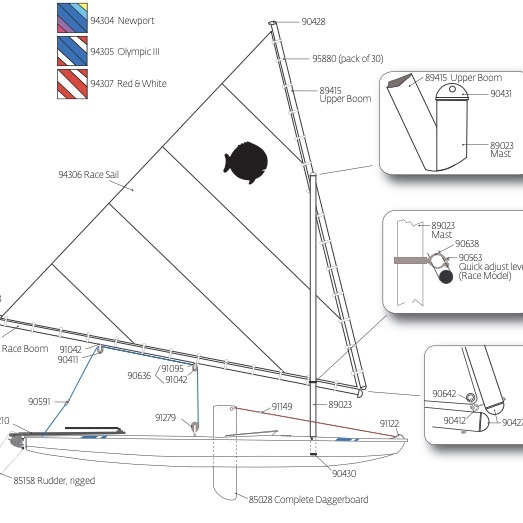
Sunfish Rigging from the West Coast Sailing Rig Shop
The Sunfish sailboat is a renowned single-handed dinghy known for its simplicity, versatility, and popularity worldwide. West Coast Sailing has all the resources you need to rig, find replacement parts, and enjoy sailing your Sunfish.
Shop Sunfish Parts
Sunfish sailboat photos (link), sunfish frequently asked questions, q: sunfish are still made huh.
A: Yes. Not nearly in the quantity that they used to, but they are still manufactured and sold.
Q: What changes have there been with the boat over the years?
A: The Sunfish is still pretty similar to how it's always been. There were some rudder and traveller upgrades, some changes to the hull/deck build and a few small hardware upgrades. But, overall the boat is very very similar to the first one made 50+ years ago.
Q: Are the blades wood still?
A: Not anymore, all of the Sunfish we bring in have the new and modern Fiberglass Rudder and Daggerboard.
Q: Where are Sunfish made?
A: At the moment, they are mainly made in Portugal.
About the Sunfish
The Sunfish sailboat is a renowned single-handed dinghy known for its simplicity, versatility, and popularity worldwide. Designed by Alcort, Inc. in 1951, the 13 feet 9 inches fiberglass hull, equipped with a cat-rigged lateen sail of 75 square feet, ensures stability and ease of handling. With a daggerboard for lateral resistance and a design suitable for a wide range of wind conditions, the Sunfish is an ideal choice for both beginners and experienced sailors. Its compact size and lightweight construction facilitate easy transport on car roofs or trailers, and it can be stored vertically or horizontally. The boat's global reach is evident through its use in recreational sailing, racing, and as a teaching tool in sailing schools, with the International Sunfish Class Association overseeing class rules and events, further cementing its status as an iconic and accessible sailboat.
Subscribe To Our Newsletter
Sign up for our newsletter to receive exclusive discounts, new product announcements, and upcoming sales.
Mastering The Art Of Rigging Sunfish For Optimal Performance
- Last updated Dec 08, 2023
- Difficulty Intemediate
- Category Sunfish
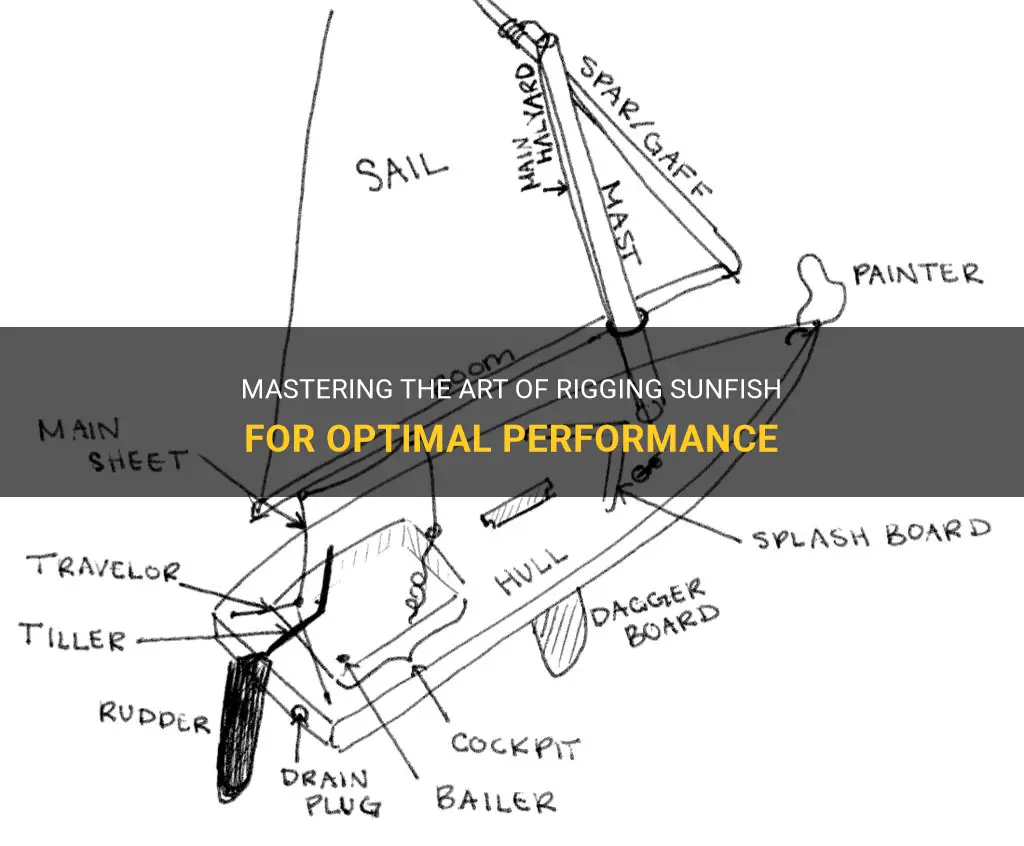
If you're an avid sailor or a beginner looking for a fun and easy-to-handle boat, the Sunfish is a fantastic choice. With its simple rigging system, this small sailboat is perfect for both recreational sailing and competitive racing. Rigging a Sunfish may seem daunting at first, but fear not! In this guide, we'll walk you through the step-by-step process of rigging your Sunfish, ensuring that you're ready to set sail in no time. So grab your sunscreen, hop aboard, and let's get rigging!
| Characteristics | Values |
|---|---|
| Hull Material | Fiberglass/Plastic |
| Length | 4.20 m |
| Beam | 1.40 m |
| Weight | 59 kg |
| Sail Area | 7.4 m² |
| Mast | Aluminum |
| Boom | Aluminum |
| Daggerboard | Fiberglass |
| Rudder | Fiberglass |
| Sail Material | Dacron |
| Number of Sails | 1 |
| Main Halyard | 6:1 |
| Vang | 3:1 |
| Outhaul | 4:1 |
| Cunningham | 4:1 |
| Traveler Control | 4:1 |
| Cunningham Control | Becket and Cleat |
| Outhaul Control | Becket and Cleat |
| Vang Control | Cleat |
| Traveler Control | Cleat |
| Ratchet Blocks | Yes |
| Jib Sheet | 3:1 |
| Jib Halyard | 3:1 |
| Jib Track | Fixed |
| Jib Leads | Adjustable |
| Jib Cleats | Cam Cleats |
| Jib Sheets | 3:1 |
| Jib Boom | Aluminum |
| Jib Battens | None |
What You'll Learn
What are the necessary steps to rig a sunfish sailboat, how do you properly attach the sail to the sunfish mast, what is the best way to rig the sunfish boom and attach it to the mast, are there any specific techniques or tips for tightening the sail on a sunfish, what are the key components of a sunfish rigging system and how do they work together.

Rigging a Sunfish sailboat is not a difficult task, but it does require some careful steps to ensure that everything is set up correctly. Whether you are a beginner or an experienced sailor, it is important to understand the process so that you can enjoy a safe and successful sail. In this article, we will provide you with a step-by-step guide on how to rig a Sunfish sailboat.
Before we begin, let's briefly discuss the basic components of a Sunfish sailboat. The Sunfish has a triangular lateen sail, which is attached to a mast. The mast is held up by a set of stays and shrouds, and the sail is controlled by a main sheet and a rudder. Now, let's jump into the rigging process!
Step 1: Prepare your equipment
Before rigging your Sunfish sailboat, gather all the necessary equipment. This includes the mast, boom, sail, rudder, tiller, main sheet, and all the lines and fittings. Also, make sure you have all the tools required for assembly, such as a screwdriver or wrench.
Step 2: Attach the mast and boom
Start by attaching the mast to the boat. Insert the bottom end of the mast into the mast step, which is a hole located in the front of the boat near the bow. Make sure the mast is securely in place. Next, attach the boom to the mast. The boom is the horizontal pole that holds the foot of the sail. Insert one end of the boom into the gooseneck fitting on the mast and secure it with a pin or clip.
Step 3: Attach the sail
Unfold the sail and hoist it up the mast. The top of the sail should be attached to the masthead fitting using a halyard. Make sure the sail is centered and straight before hoisting it all the way up. Secure the halyard to the masthead and tighten it to hold the sail in place. Adjust the tension of the halyard to suit the wind conditions.
Step 4: Rig the control lines
Next, you need to rig the control lines for the sail. The main sheet controls the angle and tension of the sail and is attached to the boom. Attach one end of the main sheet to the eye strap on the boom, and run it through the block at the back of the boat. Make sure the sheet is not tangled or twisted, and adjust the length to a comfortable reach. The rudder controls the direction of the boat and is connected to the tiller. Make sure the rudder is securely attached to the transom of the boat and adjust the length of the tiller extension for easy steering.
Step 5: Check the rigging
After completing all the steps, double-check that everything is properly rigged and secure. Make sure the mast, boom, and sail are all properly attached and tensioned. Check that the control lines are correctly run and are not tangled or obstructed. Lastly, inspect the rigging hardware for any signs of wear or damage, and replace or repair as necessary.
Congratulations! You have successfully rigged your Sunfish sailboat. Now it's time to hit the water and enjoy a great sailing experience. Remember, safety should always be your top priority, so be sure to wear a life jacket and follow all sailing regulations. Happy sailing!
Exploring the Palatable Delights of Sunfish: Do They Taste as Good as They Look?
You may want to see also
Attaching the sail to the Sunfish mast is an important step in preparing your Sunfish sailboat for sailing. The proper attachment of the sail ensures that it will catch the wind efficiently and provide you with maximum propulsion. In this article, we will provide step-by-step instructions on how to properly attach the sail to the Sunfish mast.
Step 1: Prepare the sail and mast
Before attaching the sail to the mast, make sure both the sail and the mast are clean and free from any debris. Inspect the sail for any tears or damage, and repair them if necessary.
Step 2: Insert the mast into the sail sleeve
The Sunfish sail consists of a sleeve that runs along the mast. Start by inserting the bottom end of the mast into the sleeve at the bottom of the sail. Carefully slide the mast upwards, ensuring that the sleeve is aligned with the mast.
Step 3: Secure the sail to the mast step
The mast step is the hole at the hull of the Sunfish where the mast sits. Once the mast is inserted into the sail sleeve, angle the mast so that it is perpendicular to the deck. Insert the mast into the mast step and make sure it is securely seated.
Step 4: Attach the halyard to the head of the sail
The halyard is a rope or line that is used to hoist and lower the sail. Locate the head of the sail, which is the top corner. Run the halyard through the grommet at the head of the sail and secure it with a knot or cleat.
Step 5: Tension the halyard
Once the halyard is attached, gently pull on the halyard to raise the sail. Make sure the sail is tensioned properly by adjusting the halyard. The sail should be taut and not loose or sagging.
Step 6: Secure the sheet to the clew of the sail
The sheet is another rope or line that is used to control the angle of the sail relative to the wind direction. Locate the clew of the sail, which is the bottom corner opposite the head. Attach the sheet to the clew with a bowline knot or a similar secure knot.
Step 7: Check the sail alignment
Once the sail is attached, visually inspect it to ensure proper alignment. The luff, or leading edge of the sail, should be running straight up the mast. The leech, or trailing edge, should be parallel to the centerline of the boat.
Step 8: Secure the boom
The boom is the horizontal spar that runs along the foot of the sail. Make sure the boom is properly attached to the mast and is secured with the appropriate fittings. Adjust the boom height and angle as necessary.
By following these step-by-step instructions, you can ensure that your Sunfish sail is properly attached to the mast. This will not only maximize the sailboat's performance but also enhance your overall sailing experience. Remember to always check the rigging and sail setup before heading out on the water to ensure a safe and enjoyable sail.
Exploring the Culinary Delights of Redear Sunfish: A Guide to Eating These Tasty Freshwater Fish
Rigging the Sunfish boom, which is an important part of the sailing rig, is crucial for a successful day on the water. The boom is responsible for controlling the position of the mainsail, and proper rigging ensures effective sail control and improved boat handling. In this article, we will discuss the best way to rig the Sunfish boom and attach it to the mast, taking into consideration scientific principles, personal experience, step-by-step instructions, and examples.
Scientifically, the placement and attachment of the Sunfish boom to the mast affect the sail's shape and efficiency, which ultimately impacts the boat's performance. The boom should be positioned at a height that allows the sail to achieve the desired shape, avoiding excessive curvature or flapping. This ensures that the sail catches the wind effectively, providing thrust and maneuverability. The angle at which the boom is attached to the mast also affects the overall sail profile and the boat's stability. Therefore, it is important to consider these scientific principles while rigging the Sunfish boom.
Based on personal experience and expertise, which is invaluable in sailing, the following step-by-step instructions outline the best way to rig the Sunfish boom and attach it to the mast:
- Begin by inserting the gooseneck, a fitting that connects the boom to the mast, into the hole located at the bottom of the mast.
- Slide the boom into the gooseneck, ensuring that it is aligned correctly. The boom should be parallel to the deck and centered between the sides of the boat.
- Secure the boom to the gooseneck using the boom vang, a control line that helps control the position and tension of the boom. Attach one end of the boom vang to the boom, near the middle, and the other end to the mast fitting located near the base of the mast.
- Adjust the tension of the boom vang to achieve the desired sail shape. This can be done by tightening or loosening the control line until the desired amount of tension is achieved.
- Attach the mainsail to the boom by sliding the luff, or leading edge of the sail, into the groove on the boom. Ensure that the sail is evenly tensioned and smooth without any wrinkles or creases.
- Secure the mainsail to the boom using sail ties or cleats. It is essential to ensure that the sail is properly attached to the boom to prevent any unintended shifting or flapping while underway.
By following these step-by-step instructions, you can effectively rig the Sunfish boom and attach it to the mast, setting yourself up for a successful sailing experience.
To further illustrate the best way to rig the Sunfish boom, let's consider an example. Imagine you are preparing to go sailing on a sunny day. You have your Sunfish ready, and you want to rig the boom correctly to ensure optimal sail control. By following the steps outlined above, you confidently insert the gooseneck into the mast, align the boom parallel to the deck, and attach it securely using the boom vang. You then attach the mainsail to the boom, ensuring it is evenly tensioned and smooth. Finally, you secure the sail to the boom to prevent any unintended shifting. With everything correctly rigged, you set sail and enjoy a smooth, controlled ride, utilizing the best way to rig the Sunfish boom.
In conclusion, rigging the Sunfish boom is essential for effective sail control and improved boat handling. Applying scientific principles, personal experience, step-by-step instructions, and examples, we have outlined the best way to rig the Sunfish boom and attach it to the mast. By following these guidelines, you can ensure optimal sail shape, sail control, and a successful day of sailing.
Choosing the Right Size Hook for Sunfish: A Guide to a Successful Fishing Experience
Are you a proud owner of a Sunfish sailboat? If so, you may be wondering how to properly tighten the sail for optimal performance on the water. In this article, we will discuss some specific techniques and tips for tightening the sail on a Sunfish.
Tightening the sail on a Sunfish is crucial for achieving maximum speed and control. A tight sail helps to reduce flapping and allows the wind to flow smoothly across the surface, generating lift and propulsion. Here are some techniques to help you achieve the perfect sail tension:
- Adjust the halyard: The halyard is the line that raises and lowers the sail. Start by loosening the halyard completely. Then, gradually tighten the halyard while observing the shape of the sail. Ideally, you want the sail to have a slight curve or belly in the middle, known as "draft," which helps generate lift. However, be careful not to overtighten the halyard, as it may cause the sail to become too flat and lose power.
- Use the cunningham: The cunningham is a control line that is attached to the front of the sail and can be used to further tension the sail. By pulling on the cunningham, you can flatten the sail and reduce the draft, which is useful in stronger winds. Experiment with different cunningham tension settings to find the optimal shape for the prevailing wind conditions.
- Adjust the boom vang: The boom vang is a line that controls the angle of the boom relative to the mast. A properly adjusted boom vang helps to maintain leech tension, which is the back edge of the sail. This tension plays a crucial role in controlling the shape of the sail and preventing flapping. Ensure that the vang is adjusted enough to keep the leech of the sail tight, but not so much that it overly flattens the sail.
- Check the downhaul: The downhaul is a line that controls the tension along the foot of the sail. It helps to stretch the lower part of the sail and pull the draft forward, improving the overall shape. Make sure the downhaul is snug but not overly tight, as excessive tension can distort the sail's shape and hinder performance.
In addition to these techniques, there are a few more tips to keep in mind when adjusting the sail tension on a Sunfish:
- Take note of the wind conditions: Different wind strengths require different sail tensions. In light winds, you may want to have a deeper draft for more power, while in stronger winds, you may want to flatten the sail for better control.
- Regularly inspect and maintain your sail: Check for any tears, loose stitching, or wear and tear on your sail. A well-maintained sail performs better and is easier to tighten properly.
- Practice and experiment: Finding the perfect sail tension is often a matter of trial and error. Spend time on the water experimenting with different settings and observing how the boat performs. Keep track of the adjustments you make and their effects to develop a better understanding of your boat's optimal sail tension.
- Seek advice from experienced sailors: If you are new to sailing or want to further improve your skills, consider reaching out to experienced Sunfish sailors or attending local sailing clinics. Learning from experienced sailors can provide valuable insights and guidance on adjusting the sail tension for optimal performance.
In conclusion, properly tightening the sail on a Sunfish is essential for achieving optimal performance on the water. By following the techniques and tips outlined in this article, you can fine-tune the sail tension to maximize speed, control, and overall sailing enjoyment. Remember to adjust the halyard, cunningham, boom vang, and downhaul, while considering the wind conditions and maintaining your sail. With practice and experimentation, you will become a master at achieving the perfect sail tension for your Sunfish sailboat.
The Sunfish sailboat is a classic, one-design sailboat that is popular for recreation and racing. Its simple rigging system is a key component of its success, as it allows for easy setup and sailing. In this article, we will explore the key components of a Sunfish rigging system and how they work together to create a balanced and efficient sailing experience.
The mast is the central component of the Sunfish rigging system. It is a tall, aluminum pole that supports the sail and provides stability to the boat. The mast is typically held in place by a mast step, which is a fitting on the deck of the boat that holds the bottom of the mast securely.
Attached to the mast is the sail, which is the main driving force of the boat. The Sunfish sail is a lateen rig, meaning it is triangular in shape and attached to a yard, a horizontal spar that extends along the bottom edge of the sail. The yard is attached to the mast using a halyard, a line that raises and lowers the sail. The halyard is typically controlled by a cleat, a device that holds the line in place when it is tensioned.
The boom is another important component of the Sunfish rigging system. It is a horizontal spar that extends aft from the mast and supports the bottom edge of the sail. The boom is attached to the mast using a gooseneck, a fitting that allows for movement and adjustment of the boom. The boom is controlled by a mainsheet, a line that is used to control the angle of the boom and the trim of the sail. The mainsheet is typically controlled by a cleat or a block and tackle system, which allows for easy adjustment and fine-tuning of the sail.
In addition to the main components, there are several other lines and fittings that are used to control the sail and rigging of the Sunfish. The outhaul is a line that is used to adjust the tension on the foot of the sail, allowing for fine-tuning of the sail's shape. The cunningham is a line that is used to adjust the tension on the luff of the sail, allowing for further control of the sail's shape and performance. The downhaul is a line that is used to tension the boom and maintain control over the sail in high winds. These lines are typically controlled by cleats or blocks, allowing for easy adjustment and control.
When all of these components are properly set up and adjusted, they work together to create a balanced and efficient sailing experience. The mast supports the sail, providing stability and control. The boom allows for adjustment of the sail's angle and trim, maximizing its power and efficiency. The various lines and fittings allow for easy adjustment and fine-tuning of the sail, allowing the sailor to adapt to changing wind and water conditions.
In conclusion, the key components of a Sunfish rigging system are the mast, sail, boom, and various lines and fittings. When these components are properly set up and adjusted, they work together to create a balanced and efficient sailing experience. Whether you are a recreational sailor or a competitive racer, understanding and mastering the Sunfish rigging system is essential for getting the most out of your sailing experience.
Frequently asked questions
Certainly! To rig a sunfish sailboat, start by attaching the mast to the mast step at the front of the boat. Insert the mast into the hole on the mast step and secure it with the mast step pin. Next, attach the boom to the gooseneck at the bottom of the mast. Slide the gooseneck over the mast and tighten the boom vang to hold it in place. Then, attach the mainsail to the mast and boom, making sure the halyard is securely fastened. Lastly, hoist the sail by pulling the halyard rope and tighten the sail controls as necessary.
To secure the daggerboard in a sunfish sailboat, start by inserting the daggerboard into the daggerboard trunk, which is located in the middle of the cockpit. Push the daggerboard down until it is fully inserted, then use the locking pin or thumb screw to secure it in place. Make sure the daggerboard is positioned perpendicular to the boat for optimal performance.
The hiking strap in a sunfish sailboat is used to help the sailor maintain balance and stability while sailing. It is a strap that is attached to the port and starboard sides of the cockpit and is designed to be used as a foothold. By placing their feet in the hiking strap, sailors can lean out over the side of the boat to counterbalance the force of the wind in the sail.
Properly trimming the sails on a sunfish sailboat is crucial for optimal performance. To trim the sails, adjust the main sheet, which controls the angle of the mainsail. Pull the main sheet in to trim the sail for more power or let it out to ease the sail for less power. Additionally, use the cunningham and outhaul controls to adjust the tension of the sail and optimize its shape. Experiment with different settings to find the best trim for your sailing conditions.
When rigging a sunfish sailboat, it's important to prioritize safety. Always wear a personal floatation device (PFD) when sailing. Inspect all equipment before rigging to ensure it is in good working condition. Be mindful of any overhead obstacles, such as power lines or tree branches, when raising the mast. Finally, be aware of weather conditions and only sail in appropriate conditions for your skill level.

- Andy Walters Author

- Mark Terry Author Editor Reviewer
It is awesome. Thank you for your feedback!
We are sorry. Plesae let us know what went wrong?
We will update our content. Thank you for your feedback!
Leave a comment
Sunfish photos, related posts.

Exploring the Best Summer Sunfish Fishing Spots in the Rift
- Dec 09, 2023

Uncover the Length of the Sunfish Pond Hike on this Adventurous Trail

The Distinction Between a Cappie and Sunfish Explained

Earning the Legendary Sunfish in Tap Tap Fish: A Guide

Understanding the Spawning Behavior of Sunfish: A Guide for Anglers
- Dec 08, 2023

Sunfish Boat Restoration: Finding the Experts Who Can Ensure a Job Well Done

Your shopping cart is empty!
Spars & Rigging

Refine Search
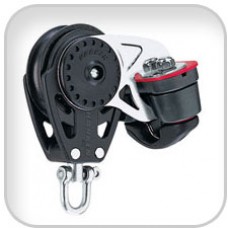
Harken, 57mm Carbo Block w-Cam Cleat, 2615
Sheave dia. (in): 1 9/16Sheave dia. (mm): 40Length (in): 2 3/4Length (mm): 70Weight w/shackle (oz): ..
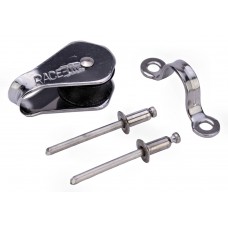
Sunfish, Boom Bullet Block Kit, 90636
This is the standard boom bullet block for Sunfish that includes the eyestrap and rivets. Inclu..
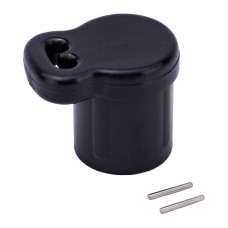
Sunfish, Boom Cap w/Eye, 90428
This plastic cap mounts to the outer end of the Sunfish boom. Eyelet allows the outhaul to be tied o..
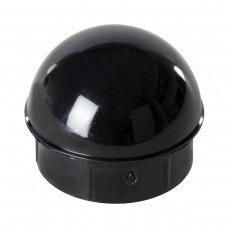
Sunfish, Boom Cap w/o Eye, 90427
Smooth Sunfish boom cap. Does not come with eye Old # 43106..
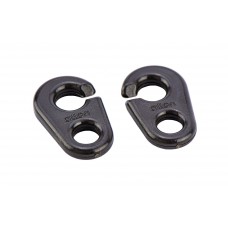
Sunfish, Brummel Hook (Package of 2), 91149
Brummel Hooks. Used for a quick connect on the current daggerboard retaining line. Old #20619Sold in..
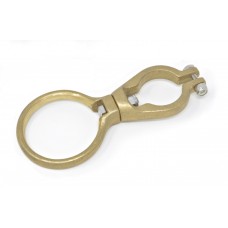
Sunfish, Gooseneck Assembly, 90638
Classic Sunfish bronze gooseneck. Attaches to the Lower Boom and Mast..
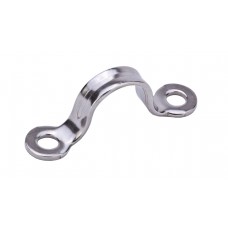
Sunfish, Heavy Guage Boom Eye Strap, 91095
Stainless Boom Eyestrap. Used to hold mainsheet blocks on Sunfish Lower Boom.45mm Length x 40mm Eye ..
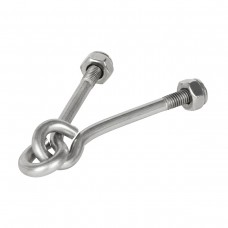
Sunfish, Interlocking Eye Bolt, 90412
Interlocking bolt for Sunfish booms. This bolt runs through the booms and connects to the sail using..
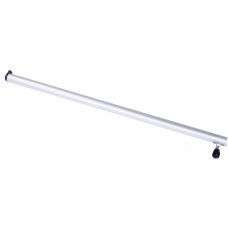
Sunfish, Lower Boom Race, 89413
Old # 99228Item is over-sizedThis is not a Standard Shipping item, and is excluded from our standard..
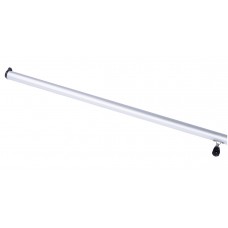
Sunfish, Lower Boom, 89414
Sunfish lower boom.Item is over-sizedThis is not a Standard Shipping item, and is excluded from our ..
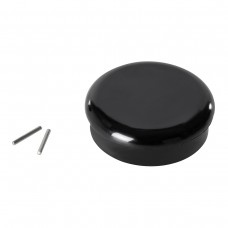
Sunfish, Lower Mast Cap w/Fastener, 90430
Plastic plug for the bottom of the Sunfish mast. Includes fastenersComes with groove pins Old # 7903..
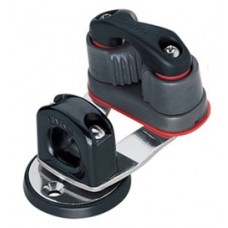
Sunfish, Mainsheet Cam Cleat, 91063
Mainsheet Cam Cleat: A swivel base for mainsheet. Includes a swivel base, bullseyes fairlead, and st..
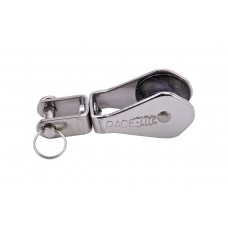
Sunfish, Mainsheet Swivel Block (Open Shackle), 91252
Open loop swivel mainsheet block by Race-Lite. Max Line 3/8"..
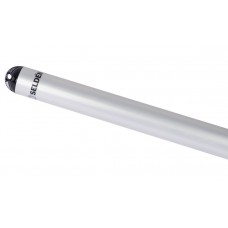
Sunfish, Mast, 89023
Complete Sunfish mast section. Includes top and bottom plugsReady to sail Old # 62401Item is over-si..
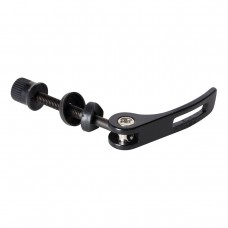
Sunfish, Quick Adjust Lever, 90563
Quickly adjust the position of your lower boom relative to the mast. This quick adjustable lever doe..
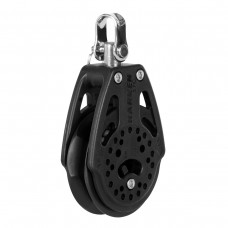
Sunfish, Ratchet Block (2-1/4), 91333
A fantastic block for a variety of applications. A great ratcheting mainsheet block with smooth acti..
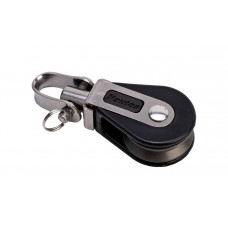
Sunfish, Single Boom Block, 10110
This is the forward most block on the Sunfish boom. Basic block, no swivel. Max. line 3/8" Old # 910..
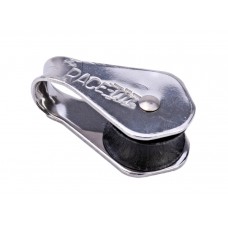
Sunfish, Single Boom Block, 91042
This is the forward most block on the Sunfish boom. Basic block, no swivel. Max. line 3/8" Old # 431..
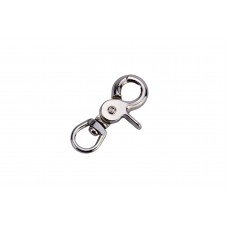
Sunfish, Snap Hook, 90591
Sunfish Mainsheet Snap Hook used for newer style 2-LOOP bridle. Colors may vary (chrome or bron..

Sunfish, Snap Trigger, 91208
This is the Sunfish snap trigger, tie the end of the mainsheet to this and then snap it onto the tra..
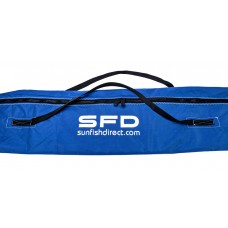
Sunfish, Spar Bag, 87132
The Sunfish Spar bag is a durable bag designed to store and protect Sunfish spars. The Sunfish spar ..
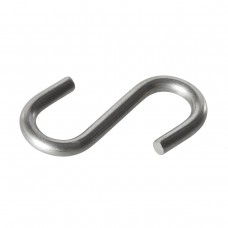
Sunfish, Stainless Steel 'S' Hook, 90642
The 'S' hook connects the tack of the sail to the interlocking eyebolt, where the (2) booms meet on ..
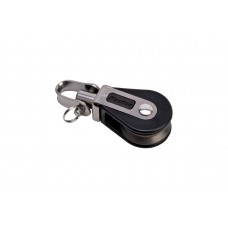
Sunfish, Swivel Eye Block, 10111
This is the furthest aft block on the Sunfish boom. Equipped with a swivel for smooth action of the ..
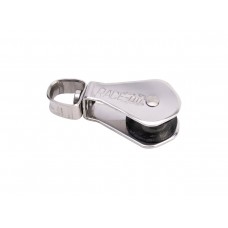
Sunfish, Swivel Eye Block, 90411
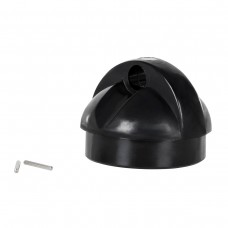
Sunfish, Top Mast Cap, 90431
This is the cap fitting for the top of the Sunfish mast. Includes fasteners Old # 79031..
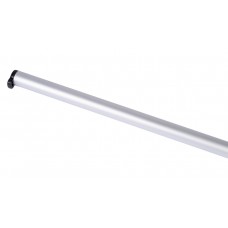
Sunfish, Upper Boom, 89415
Old # 62405Item is over-sizedThis is not a Standard Shipping item, and is excluded from our standard..
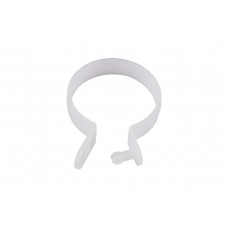
Sunfish Sail Ring (Single Ring), Clear
The sail rings fit around the booms and clip onto the sail, holding it securely. Quantity:..
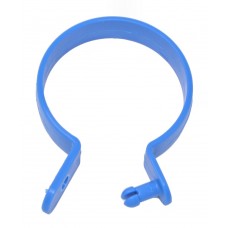
Sunfish Sail Ring (Single Ring), Blue
The sail rings fit around the booms and clip onto the sail, holding it securely. Qua..
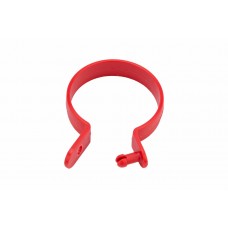
Sunfish Sail Ring (Single Ring), Red
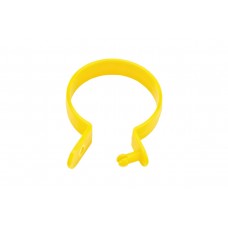
Sunfish Sail Ring (Single Ring), Yellow

IMAGES
VIDEO
COMMENTS
Learn how to set up the rigging on a Sunfish sailboat with this visual representation of the various components and their proper placement. Follow the diagram and the detailed instructions to rig the mast, boom, sail, lines, rudder, and daggerboard.
Process of Stepping the Mast, Which Involves Attaching the Mast to the Boat's Hull. Stepping the mast is a crucial step in rigging your Sunfish. Follow these steps carefully: Attach the Mast Step: The mast step is a metal fitting on the boat's deck near the bow. Insert the bottom end of the mast into the mast step.
Congratulations on the purchase of your new Sunfish!We suggest that you read through this guide to better familiarize yourself with the parts and rigging of your new boat. If you have any questions please contact your dealer or call Vanguard's customer service at 1-800-966-SAIL. Daggerboard Upper Boom Mainsheet Halyard Rudder Lower Boom Mast Bow
Sunfish Rigging Instructions Congratulations on the purchase of your new Sunfish! We suggest that you read through this guide to better familiarize yourself with the parts and rigging of your Sunfish. If you have any questions please contact your dealer or call LaserPerformance customer service at 1-800-966-SAIL. 1. Parts of the Hull Gudgeon STERN
In this Video, Sunfish Sailor, Lee Montes shows you how to take a regular Recreational Sunfish Sailboat and shows you need to Rig it to be a Racing Sunfish ...
Rigging Guide & Owner's Manual. Step 7: Raise the Sail. With your boat head-to-wind, pull on the halyard to raise the sail. You . may need to lift up on the lower boom near the gooseneck to allow the . gooseneck to slide freely. Once the clove hitch is tight against the mast cap, thread the halyard through the fairlead and secure it to the ...
Sunfish Sailor, Lee Montes, shows you how to rig a Sunfish Sailboat with a Jens Rig. With detailed descriptions of the GUST ADJUST, The Long Island Jens, The...
SUNFISH SUNFISH RACE SUNFISH Rigging Manual 1 Parts of the Hull 2 Parts of the Sail 3 Sunfi sh Mast Kit 4 Bailer Installation 5 Ratchet Block Installation 6 Attaching the Sail to the Booms (Standard) 7 Attaching the Sail to the Booms (Race) 8 Rigging the Outhaul (Race) 9 Rigging the Cunningham (Race) 10 Stepping the Mast: Standard and Race 11 Attaching the Main Halyard: Standard and Race
Lee Montes, Sunfish Sailor, interviews and talks to Sunfish Legend Bob Findlay. Bob has won two North American Championships, and multiple Major Titles In th...
Rigging a Sunfish sailboat is a simple procedure that includes a few important steps. Prepare the hull of the boat before positioning it on land or in shallow water. The mast should then be secured in the mast step before the boom is fastened to the gooseneck fitting on the mast. The sail is unrolled and raised using the halyard.
Sunfish - the world's best recreational sailboat. Sunfish sailing is all about simplicity and FUN - from generation to generation. For over sixty years there has been no better way to play on the water. Sunfish have explored quiet coves, planed across lakes and bays, and danced in the big ocean swells. Hailed by Fortune Magazine as one of ...
Learn how to rig your sunfish sailboat with this easy guide that includes tips, knots, and video. Find out the history, cost, and where to buy a sunfish sailboat.
Learn how to rig a Sunfish sailboat with this step-by-step guide. Find out the parts, tools, knots, and tips you need to sail this popular dinghy.
Rigging a sunfish (Both Video and Text below) Rigging a Sunfish: 1) Connect the Rudder to your Sunfish sailboat . Attach the rudder by sliding the tiller under the line called the traveler. Press up on the pin along the edge of the rudder while sliding the rudder into the bracket on the back of the hull. 2) Position the boat facing the wind.
Learn to rig your Sunfish sailboat with this video tutorial. Sunfish, and the round fish logo, are trademarks of the manufacturer.
Sunfish Sailing Techniques Rigging the Sunfish. A Sunfish must have its sail, daggerboard, and rudder tightly fastened before it may sail. For safe and pleasurable sailing, proper rigging is crucial. Basic Sailing Maneuvers. Tacking: This maneuver involves rotating the boat's bow through the wind, which allows the sail to seamlessly change sides.
Sunfish Racing Main Halyard. $32.29. Sunfish Bridle 3 Loop (Wire) $31.44. Sunfish Bridle 2 Loop (Dyneema) $33.99. The Sunfish sailboat is a renowned single-handed dinghy known for its simplicity, versatility, and popularity worldwide. West Coast Sailing has all the resources you need to rig, find replacement parts, and enjoy sailing your Sunfish.
Step 1: Prepare your equipment. Before rigging your Sunfish sailboat, gather all the necessary equipment. This includes the mast, boom, sail, rudder, tiller, main sheet, and all the lines and fittings. Also, make sure you have all the tools required for assembly, such as a screwdriver or wrench.
Spars & Rigging. 87132 Spar Bag. 90428 Boom Cap w/ Eye. 95880 Sail Rings (pkg of 30) 89415 Upper Boom. 89023 Mast. 89023 Mast. 90430 Mast Base Cap. ... Sunfish Sail Ring (Single Ring), Yellow. The sail rings fit around the booms and clip onto the sail, holding it securely. Qua..
AeroSouth, FS Wood Rigged Rudder, Sunfish, FS-RDD-BLD-FOR-RIG. Improve the speed and handling of your Sunfish Sailboat with the fully rigged FS Rudder Blade. Made .. $450.00 ... Improve the speed and handling of your Sunfish Sailboat with a Sabre Daggerboard. Made of laminated .. $350.00 Add to Cart. AeroSouth, Sunfish Dinghy Bob, DNG-BOB ...
How to rig a sunfish from the beach part 1. This video goes over how to set up the mast and sail on a sunfish.
Carolina State Parks Step-by-Step Instructions for Rigging a SunfishSecuring the Drain PlugsAttaching the RudderAttach and Hoist the MainsailRigging the Main...
How to rig a Sunfish Sailboat.